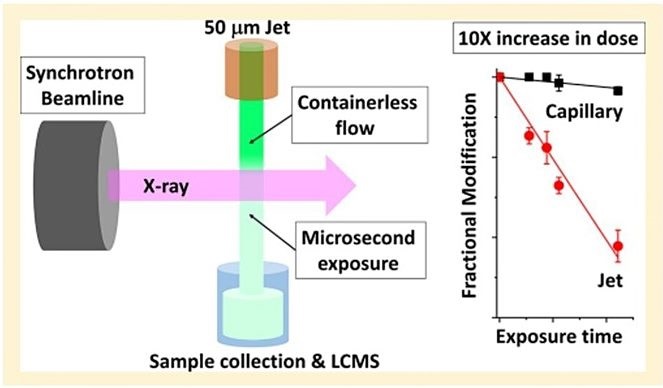Advances in the method of X-ray footprinting and its application to the investigation of protein interactions and conformation
About this event

Speaker : Corie Ralson, PhD, Facility Director, Biological Nanostructures Facility at The Molecular Foundry and Guest Scientist in Molecular Biophysics & Integrated Bioimaging
The use of X-ray footprinting mass spectrometry (XFMS) to investigate structural features and conformational changes of macromolecules in the solution state has grown substantially in the past decade and has been successfully applied to systems ranging from single domain proteins to in vivo ribonucleoprotein assemblies. The method is highly complementary to the more widely used structural elucidation techniques for biological macromolecules such as x-ray diffraction, HDX, and cryo-electron microscopy. XFMS is an in situ hydroxyl radical (•OH) labeling method; X-ray irradiation dissociates solvent water to produce hydroxyl radicals, which covalently modify side chains which are solvent accessible. More specifically, residues which are in proximity to water molecules (either bulk or bound) are modified to a greater extent than residues which are not in proximity to water. Because liquid chromatography-mass spectrometry is then used to analyze the stable covalent modifications produced, the data provide a “water map” at the single residue level, which is then used to determine sample conformation. In this talk, I will describe the XFMS method, its advantages and disadvantages relative to other methods, recent technological advances in the method, and some recent exciting examples of structural information obtained on protein systems using the method.

Corie Ralston holds a B.S. in Physics from the University of California at Berkeley, and a Ph.D. in Biophysics from the University of California at Davis. She completed a post-doctoral fellowship at Brookhaven National Laboratory during which she helped develop the method of X-ray footprinting as a structural investigation technique for proteins and nucleic acids. In addition to being the Facility Director of of the Biological Nanostructures facility at the Molecular Foundry, she holds a guest appointment in the Molecular Biophysics and Integrated Bioimaging division at Berkeley Lab, and is actively developing the method of X-ray footprinting at the Advanced Light Source synchrotron.
